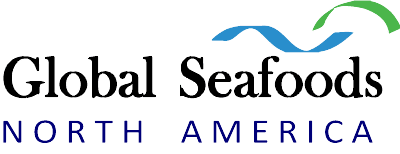Aquaculture Innovations: Sustainable Practices Shaping the Future of Seafood

Aquaculture: The Future of Seafood
Aquaculture, the cultivation of aquatic organisms, is rapidly becoming the cornerstone of the global seafood industry. With wild fish populations under stress and ocean ecosystems threatened, aquaculture offers a science-driven, sustainable solution. Whether or not state legislation, like in Alaska and Washington, aims to restrict it, aquaculture is poised to become the dominant source of seafood globally within the next 20 to 30 years.
The Evolution of Aquaculture
In recent decades, aquaculture has advanced far beyond traditional practices. It now incorporates technology, environmental management, and precision farming to produce more fish, more sustainably.
-
Land-Based Recirculating Systems: Facilities such as Langsand Laks in Denmark recycle over 95% of their water, reducing environmental impact and disease spread.
-
Offshore Aquaculture: Blue Ocean Mariculture in Hawaii shows how deep-sea farming can deliver high-quality seafood while minimizing the ecological footprint.
Sustainable Practices in Modern Aquaculture
Sustainability is key to aquaculture’s future. Techniques designed to reduce resource use and environmental impact include:
-
Integrated Multi-Trophic Aquaculture (IMTA): Fish, shellfish, and seaweed are co-farmed to create symbiotic systems that naturally purify water and reduce waste.
-
Alternative Feeds: Plant-based ingredients, algae, and insect proteins like black soldier fly larvae are replacing traditional fishmeal to ease pressure on wild stocks.
-
Selective Breeding: Innovations such as the golden barramundi in Australia demonstrate how genetic improvements can enhance fish health and growth.
Technological Innovations Driving Aquaculture
From sensors to AI, technology is revolutionizing fish farming:
-
IoT and Automation: Smart farms use real-time sensors and automation to monitor fish health, feed schedules, and water quality with minimal human intervention.
-
Genetic Engineering: Emerging genetic tools help improve fish traits for resilience and yield, contributing to more efficient farms.
-
Big Data and AI: Predictive analytics can spot disease outbreaks early, fine-tune growth rates, and optimize resource use.
Benefits of Sustainable Aquaculture
Eco-conscious aquaculture is a win-win for people and the planet:
-
Environmental Conservation: Less reliance on wild fisheries preserves marine ecosystems.
-
Food Security: Stable supply chains provide dependable protein for billions.
-
Job Creation: Coastal communities benefit economically from aquaculture operations.
-
Nutrition: Farmed fish deliver omega-3s, protein, and essential nutrients critical for human health.
FAQs About Aquaculture Innovations
Q1: What is the significance of aquaculture in today's world?
A1: It ensures a sustainable seafood supply, helping address overfishing and meet global demand.
Q2: How do technological advancements benefit aquaculture?
A2: They enhance farm efficiency, improve animal welfare, and enable precision environmental control.
Q3: Are farmed fish as nutritious as wild-caught fish?
A3: Yes, when responsibly raised, farmed fish are rich in protein and healthy fats, comparable to wild varieties.
Q4: What are the environmental impacts of aquaculture?
A4: With sustainable systems like RAS and IMTA, aquaculture’s impact is greatly reduced and often beneficial.
Q5: How does aquaculture contribute to the economy?
A5: It supports local jobs, boosts exports, and strengthens food industry infrastructure worldwide.
Q6: Where can consumers find sustainably farmed seafood?
A6: Visit Global Seafoods for responsibly sourced options including whitefish, tuna, sablefish, frozen fish, fresh market, and smoked seafood.
Conclusion
Aquaculture is the sustainable solution that will shape the future of seafood. Despite resistance from local legislation in places like Alaska and Washington State, the industry's momentum is unstoppable. Over the next two to three decades, aquaculture will likely surpass wild fishing as the world’s leading seafood source.
Embracing smart, sustainable aquaculture means committing to innovation, environmental protection, and food security.
Explore premium seafood at Global Seafoods, and stay updated with industry trends, recipes, and insights by subscribing to the Global Seafoods YouTube Channel.
Also in News

How to Make Sea Bream Sushi With Dry-Aged Tuna & Crab Roll — Step-by-Step With Chef Joshua
A complete guide to making Sea Bream sushi at home, including filleting, curing, slicing, and building a Dry-Aged Tuna & Crab sushi roll. Chef Joshua shares professional tips for restaurant-quality results.

Boiled Crab for Game Night: Everything You Need for a Perfect Seafood Party
Take your game night to the next level with a Boiled crab party. Learn the best recipes, cooking tips, and hosting hacks for a memorable seafood feast.

Boiled Crab for Date Night: A Romantic Guide to the Perfect Seafood Feast
Make your next date night unforgettable with a romantic Boiled crab experience. This guide covers everything you need to know, from ambiance to the best crab varieties.
